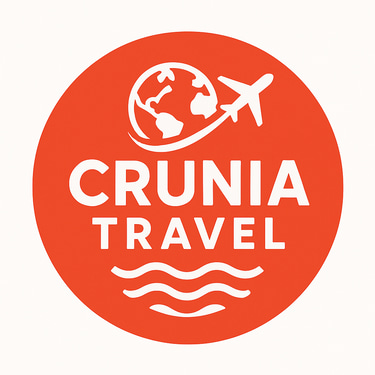Pintxos & Prestige: The Flavors of San Sebastián
San Sebastián—or Donostia, as it’s known in Euskara—is a jewel set on Spain’s northern coast, at the gateway between mountains and the sea. It feels both regal and grounded: a city that once hosted Spanish royalty, now ruled by its chefs. Here, modernist architecture kisses old-world charm, Basque flags flutter with pride, and the Atlantic breeze makes even the most luxurious experience feel refreshingly down to earth.
21 ESCAPESSPAIN
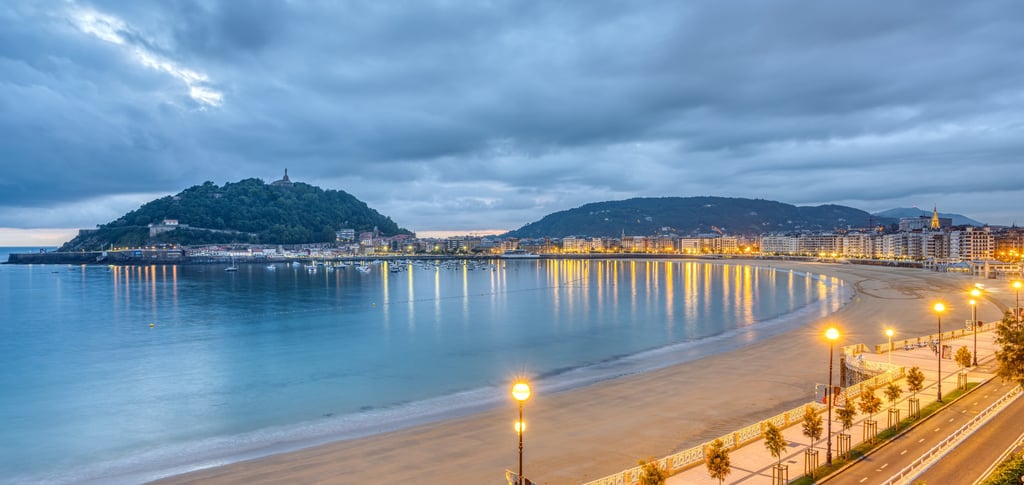

A City Made of Sea, Salt, and Soul
San Sebastián—or Donostia, as it’s known in Euskera—is a jewel set on Spain’s northern coast, at the gateway between mountains and the sea. It feels both regal and grounded: a city that once hosted Spanish royalty, now ruled by its chefs. Here, modernist architecture kisses old-world charm, Basque flags flutter with pride, and the Sea breeze makes even the most luxurious experience feel refreshingly down to earth.
But there’s more than beaches and Michelin stars. San Sebastián is a cultural hub, with deep historical roots and one of Europe’s most prestigious film festivals. It’s walkable, romantic, delicious, and packed with surprises—especially if you step off the postcard trail.
A Taste of Elegance by the Sea
Nestled between emerald hills and the Bay of Biscay, known to locals as Donostia, this coastal gem in the Basque Country has the rare ability to make you feel like royalty and family at the same time. I arrived on a misty morning in late September, the scent of salt in the air and something almost cinematic in the breeze. It was as if the city was already preparing for the San Sebastián International Film Festival.
Before diving into pintxos and panoramic views, this city, once a royal summer retreat, had endured destruction in the 19th century and rebirth in the Belle Époque. Today, it’s a place where Basque traditions hum beneath Michelin-starred kitchens and surfers paddle beside art installations.
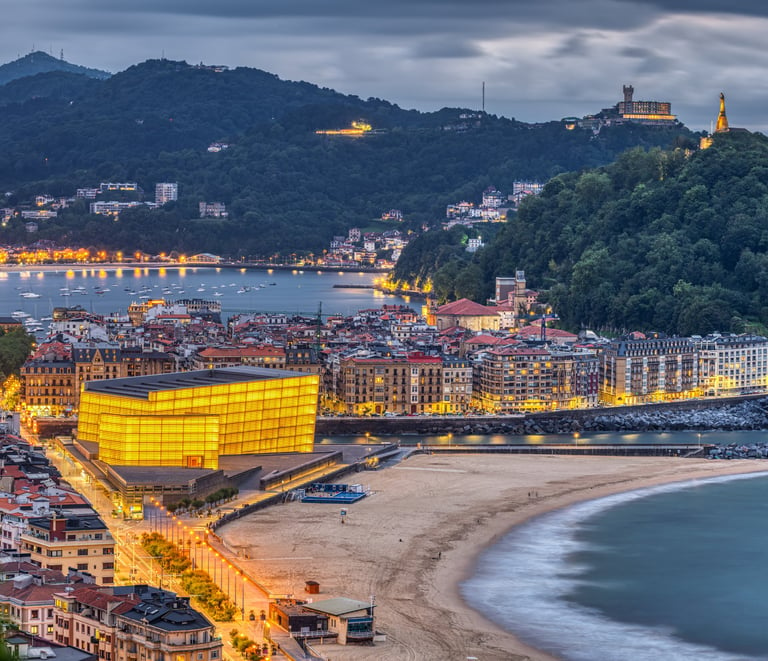

Between the Past and the Pintxo. I began my journey in the Old Town, the Parte Vieja. The cobbled streets curled like a snail shell, lined with bars stacked high with colorful pintxos. Locals greeted each other in Euskara and Spanish, moving from one bar to another like choreographed dancers. At La Cuchara de San Telmo, I tried slow-cooked veal cheeks that melted into the Rioja I sipped beside it. A few streets away, Bar Nestor offered a single tortilla a day, and I was lucky enough to get a slice—golden, runny, and unforgettable. Behind the scenes of this culinary ballet is a fiercely proud culture. In private gastronomic societies called txokos, friends gather not to dine but to cook together, keeping alive centuries-old recipes and rituals.
From the Mountains to the Waves. No trip to Donostia is complete without climbing Monte Urgull. As I walked uphill past ancient ramparts and a 12th-century castle, the story of the city’s resilience unfolded. At the summit, the city stretched out before me—La Concha Bay curved like a painter’s brushstroke, with boats bobbing like scattered pearls.
Later, I rode the funicular to Monte Igueldo. The creaky wooden carriage took me to a vintage amusement park where I watched the sun dip behind the Atlantic. At Peine del Viento, Chillida’s iron sculptures combed the sea breeze as waves exploded below.
The Festival That Shines in September. I came for the food, but the San Sebastián International Film Festival seduced me. Red carpets unfurled at the Kursaal and Victoria Eugenia Theatre, where stars walked among locals. I snagged tickets to a screening at Tabakalera—a former tobacco factory turned cultural center—and joined a post-film debate over txakoli wine and anchovies.
What I loved most was the democracy of it all: celebrities, cinephiles, and curious travelers, side by side in their love for storytelling. I sat on the terrace of the Kursaal, a sea breeze tousling my notes as I wrote down the films I had fallen for.
Beyond the City Limits. With a rental car and an appetite, I set out to explore the Basque coast. First stop: Getaria, where the grilled turbot at Elkano tasted of open flame and ocean spray. The Cristóbal Balenciaga Museum added a layer of unexpected elegance to the town’s fishing charm. In Hondarribia, pastel balconies watched over medieval streets. I crossed from France by ferry, a two-nation hop that ended with prawns on the harbor. Later, I hiked the Flysch Cliffs in Zumaia, and it honestly felt like walking through a giant science book. The rocks were stacked in layers, each one showing how the earth has changed over millions of years. It was super cool to learn that the ocean helped shape them, with the waves crashing and wearing them down over time. The cliffs stretched along the coast like a giant staircase, and I couldn’t stop staring at how crazy and awesome they looked. It was like nature’s way of showing off.
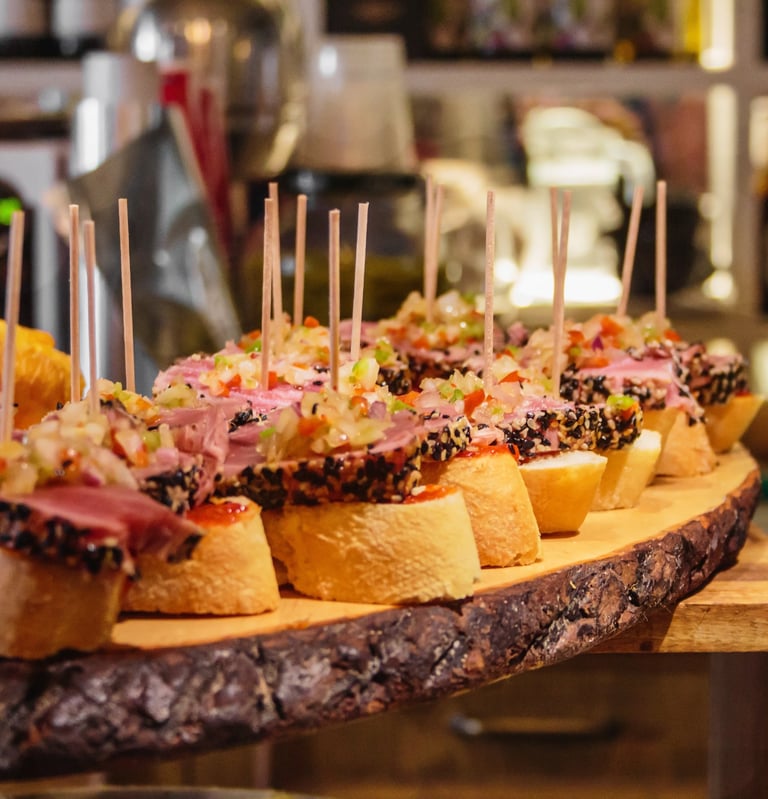

Returning to San Sebastián, I quickly realized that food here spoke louder than words—a deeply rooted expression of culture, community, and creativity. If there’s one truth about the Basque Country, it’s this: here, food isn’t just an attraction—it’s a way of life. A conversation. A heritage. Whether you’re biting into freshly grilled anchovies at a beach bar or sipping cider from a barrel in Astigarraga, you’re part of something much larger.
Txakoli is the region’s sparkling white wine, poured from high to release its slight fizz. Local cider, or sagardo, is earthy and dry, poured straight from the barrel in traditional sagardotegi during the January–April season. And let’s not forget the ruby red Rioja—smooth, bold, and made to accompany grilled meats and hearty stews.
San Sebastián alone has more Michelin stars per capita than almost anywhere in the world. But don’t be fooled—it’s not all white tablecloths. The culinary heartbeat is found in pintxos bars, the Basque twist on tapas, where every bite tells a story.
Unlike tapas, which are often shared plates, pintxos are personal, crafted, and meant to be savored one by one. Each bar tells its own story. Locals don’t sit down—they stand, lean, mingle. One pintxo. One small drink. Move on. It’s called a pintxo crawl, and it’s as much a cultural ritual as a gastronomic one. Don’t expect menus on tables. Instead, read the blackboards, scan the counters, and don’t hesitate to ask for the pintxo caliente—the hot ones made to order, often the best-kept secrets.
I tasted kokotxas (fish cheeks) in pil-pil sauce, aged Idiazabal cheese, and cider poured from wooden barrels in the hills of Astigarraga. At Ganbara, mushrooms ruled the plate. At Martín Berasategui, I felt I had entered a temple. Every dish was a revelation, each flavor a new word in the Basque dialect of gastronomy.
Farewell from La Concha
On my final morning, I walked the entire curve of La Concha Beach, toes in the tide, heart heavy with gratitude. A woman walked past with her dog, nodding with a quiet “Egun on.” A surfer zipped up his wetsuit, eyeing the perfect wave. A couple drank coffee at a seaside café, their pintxo plates still half full.
I paused at the Miramar Palace Gardens, the bay stretched below, calm and blue. San Sebastián wasn’t a place I visited. It was a place I lived, if only for a moment. A city where every meal is a memory, every view a story, and every goodbye just a promise to return.
If there’s one truth about the Basque Country, it’s this: here, food isn’t just an attraction—it’s a way of life. A conversation. A heritage. Whether you’re biting into freshly grilled anchovies at a beach bar or sipping cider from a barrel in Astigarraga, you’re part of something much larger.
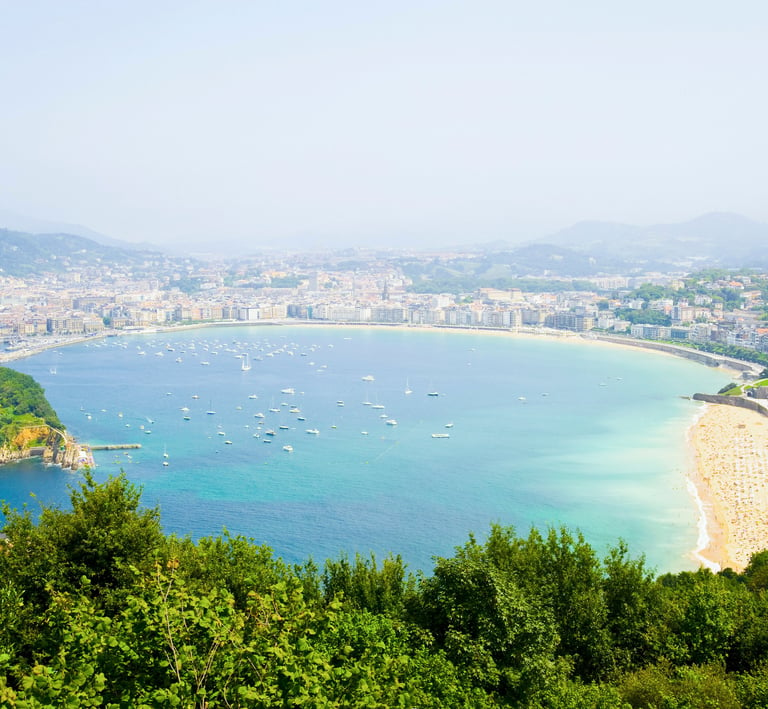

One-Day Trips from San Sebastián
1. Hondarribia (30 min drive)
A fortified town by the border, with colorful balconies, cobblestone charm, and outstanding seafood. Head to Alameda or Gran Sol for pintxos.
2. Getaria (35 min drive)
Birthplace of fashion icon Balenciaga and home to grilled fish perfection. Dine at Elkano or Kaia-Kaipe and sip local Txakoli wine by the sea.
3. Bilbao (1 hour by car/train)
Visit the Guggenheim Museum, enjoy riverside strolls, and discover a different Basque rhythm.
4. Biarritz (France, 45 min drive)
Hop across the border for elegant French beaches, chocolate, and oceanfront cafés. Bonus: surf culture meets Belle Époque architecture.
5. Zumaia & Flysch Cliffs
Spectacular geology and dramatic cliffs used in Game of Thrones. Perfect for hikers, photographers, and nature lovers.
Where to Eat:
La Cuchara de San Telmo (Old Town). Unassuming. Packed. Divine. Get the veal cheeks or foie. No frills, all flavor.
Ganbara. Mushroom heaven. Their wild mushroom pintxo with egg yolk is a rite of passage.
Bar Nestor. Two words: tomato salad. Wait, what? Yes. Add the chuleta steak and you’ll understand the hype. Get there early—there’s only one tortilla per day.
Casa Urola (Old Town). Combines old-school charm with contemporary pintxos. Don’t miss the grilled squid.
Txepetxa (Old Town). Anchovy paradise. Try it with blueberry jam or sea urchin roe.
Astelena 148 (City Center). Creative and beautifully plated pintxos in a slightly more refined setting.
Bodega Donostiarra (Gros). A local favorite outside the Old Town. Order the Indurain pintxo—anchovy, chili, and pickles.
Bar Bergara (Gros). Award-winning pintxos like txangurro (spider crab) and foie creations. Classic and delicious.
Restaurante Martín Berasategui (Lasarte-Oria, 15 minutes by car). A temple. 3 Michelin stars. A surreal symphony of Basque identity on every plate.
Arzak (3 Michelin Stars). Run by the legendary Juan Mari Arzak and his daughter Elena, this is innovation grounded in Basque soul. Expect surprises.
Bodegón Alejandro
Rustic elegance and historic roots. This place saw Martín Berasategui rise before he built his own empire.
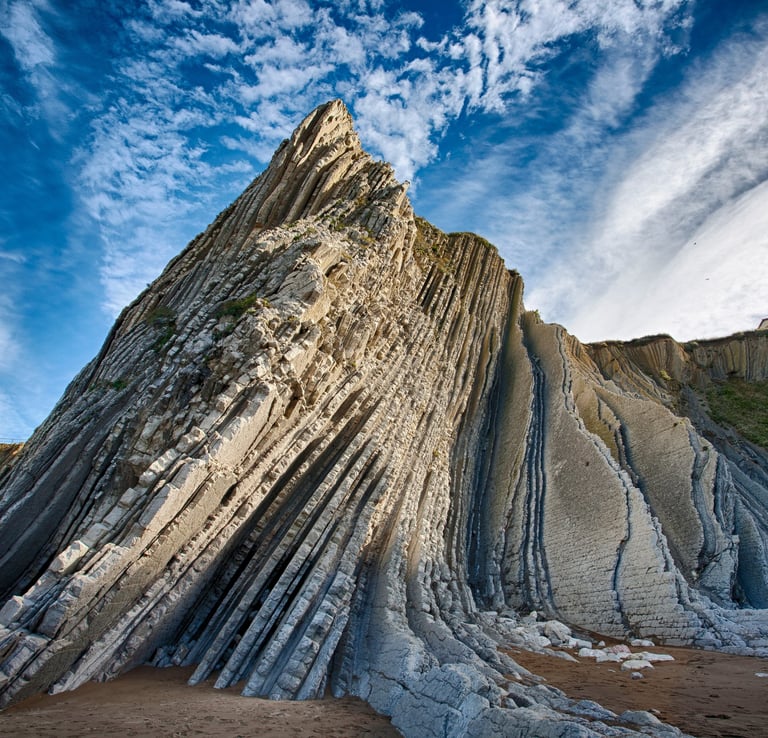

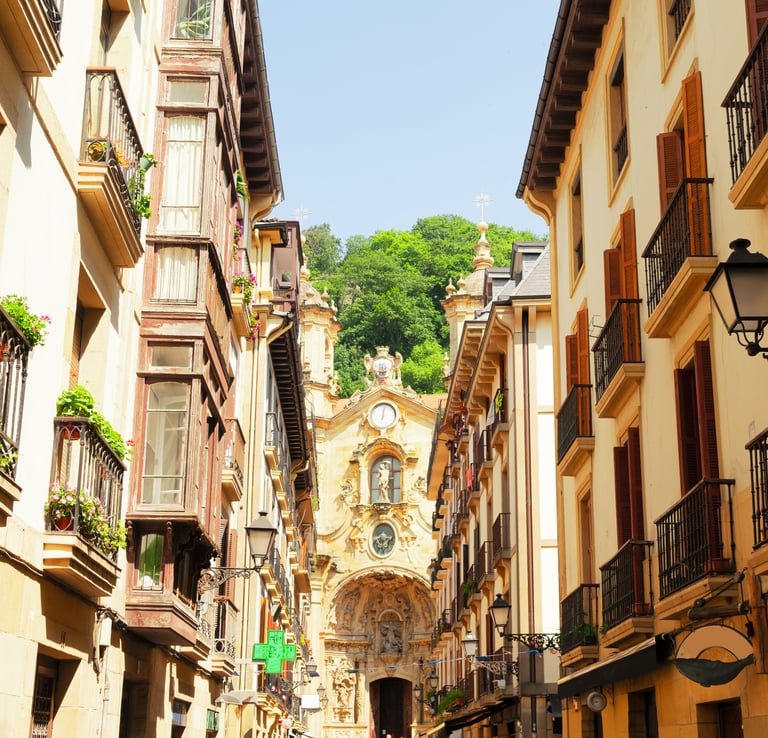

Cultural Buildings and Landmarks to Visit
Pair your pintxos with a side of history and architecture:
San Telmo Museum
A beautiful former convent turned into a museum of Basque culture, history, and art.
Victoria Eugenia Theatre
An ornate Belle Époque building that hosts concerts, plays, and festival screenings.
Kursaal Congress Centre
A striking modern landmark by architect Rafael Moneo. Main venue for the Film Festival and cultural events.
Tabakalera Cultural Centre
Former tobacco factory now turned into a contemporary art and creativity hub. Great rooftop terrace.
Address: Andre zigarrogileak plaza, 1
Miramar Palace
Former royal palace with gardens and sweeping views of La Concha Bay. Peaceful and scenic.
Buen Pastor Cathedral
A neo-Gothic cathedral that towers over the city’s center. Its peaceful interior is perfect for a quiet pause.
Basílica de Santa María del Coro
Baroque grandeur in the heart of the Old Town. The façade is just as impressive as the interior.
Peine del Viento (Comb of the Wind)
Eduardo Chillida’s famous sculpture at the end of Ondarreta Beach. A mix of art and nature.
Monte Urgull & Castillo de la Mota
Hike up to visit this 12th-century fortress and enjoy panoramic views. Includes a small history museum.
Aquarium of San Sebastián
More than just a family stop—it has impressive marine exhibits and a beautiful Art Deco entrance.
Crunia Travel
Customized travel experiences await you.
Get in touch
hello@cruniatravel.com
+1 754 457 2624
© 2025. All rights reserved.
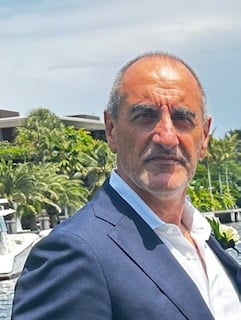

admin@cruniallc.com
